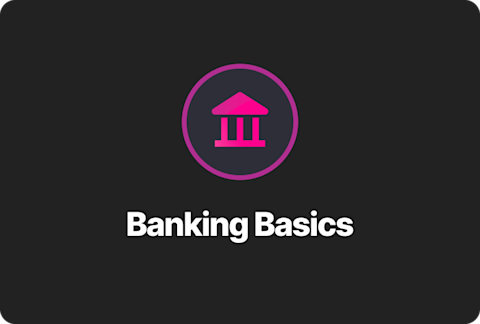Your guide to saving money

Sometimes the hardest thing about saving money is just getting started. This guide can help you develop a realistic strategy to reach your savings goals – whether it’s going to college or splurging on tickets to Taylor Swift’s latest tour.
Making smart spending decisions
Awareness is the key to making smart spending decisions. If you want to amp up your savings efforts, it helps to know where you’re spending money. This is where creating a budget can come in handy.
Take a closer look at where your money is going by reviewing past purchases or bank statements. That way, you can identify areas where you may be overspending and find ways to save. As a bonus, having a budget in place makes it easier to resist impulse purchases if they don’t fit in with your current spending plans.
If you already have a tight budget and can’t find expenses to cut, you may need to get creative. Here’s some ideas for lowering your expenses:
Go splitsies. See if a sibling is willing to go in on a Spotify family plan or Xbox Live account with you.
Cancel it. Cancel any services with monthly fees that you no longer use, such as a magazine or box subscription. -Ask for student discounts. Show your student ID at restaurants and stores—many offer 5%, 10%, or even 15% off for student shoppers. -Look for deals. Shop the clearance racks or wait for sales before heading to the mall, and check for coupon codes before making an online purchase. These small steps can add up to big money if you pay close attention to your spending.
Setting savings goals
Opening a savings account is pretty simple, but it won’t mean much unless you have goals. Just like having a soccer ball gathering dust in your closet won’t get you to the World Cup someday, having a savings account won’t give you financial security if there’s no money in it. You’ve got to work at it and do so regularly. But how?
Maybe you have a specific goal in mind, like buying a new gaming console or putting aside money for a trip after graduation. Your goal can be ultra-specific or more general. The point is to have goals that reflect your needs and wants.
Once you have a savings goal in mind, you can start mapping out how to get there. For example, if your goal is to raise $1,000 for a trip that you want to take 12 months from now, you’ll see that you can achieve that by setting aside about $83 each month.
These simple calculations will show you exactly how much of your monthly income—whether that’s an allowance, a paycheck, cash from chores, or some combination of those—needs to be set aside to meet your goal.
Make saving a habit
When it comes to managing your finances, making savings a regular habit is crucial. Saving money can help you build a safety net for unexpected expenses, reach financial goals, and develop good financial habits that can last a lifetime.
One way to make saving a habit is to pay yourself first. With this method, you set aside money each time you get paid and dedicate that money to one of your goals. This helps minimize the chance that you’ll make an impulse purchase (or two) before setting some money aside!
Another way to make saving part of your everyday spending is using Round Ups, a popular feature found in financial apps like Step. Step will automatically round up your purchases to the nearest dollar and put the spare change in a savings goal of your choice. A little change can go a long way when you consistently collect spare change!
Earn money
In order to build your savings, you’ll need to earn money. For many teens, this means finding a job that works with their school and extracurricular schedule. Luckily, there are lots of options when it comes to making money.
Whether it’s a part-time job during the school year or something temporary for the summer, there are plenty of workplaces with seasonal jobs well-suited for teens. Check to see if your local grocery store or pizza shop is hiring, for example. Certain job search sites, such as Snagajob, specifically cater to part-time or hourly jobs that are a good fit for young adults.
Even beyond traditional jobs, there are plenty of ways to make money. Create a side gig mowing your neighbors’ lawns or babysitting the kids across the street. Offer your digital skills, such as social media management or photo editing, through freelance marketplaces such as Fiverr. If you’re crafty, you can even start a business selling handmade goods on Etsy. Whatever your interests, there is likely a way to make money doing it.
And if all else fails, there are still good old-fashioned household chores. Ask your parents if they’d pay you if you pitched in more around the house. Offer to do the tasks that no one else wants to do, like cleaning out the garage or weeding the garden in exchange for a contribution to your savings account. You’ll create a win-win situation—doing your parents a favor while working toward your savings goal.
Choose the right savings vehicle
To make the most out of your savings, you need to put that money in the right place. You could stash your cash in a piggy bank or a shoe box, but you might miss out on the magic of compound interest and the security that comes with some savings products that financial institutions or companies offer.
A traditional savings account isn’t your only option for keeping your money safe and helping it grow. When it comes to saving money, it's important to choose a smart savings vehicle that earns interest. The higher the interest rate, the more money your savings can accumulate over time. There are several options available including high-yield savings accounts, money market accounts, and certificates of deposit, just to name a few.
Before choosing a savings vehicle, it's important to do your research and compare the interest rates and fees associated with each option to determine the best savings vehicle for your individual needs and goals.
The takeaway
Saving money may not seem fun at first glance, but it can make life easier and more enjoyable further down the line.
Need somewhere safe to build your savings? Check out Step! You can set savings goals, earn 4.00% on your savings balances up to $1,000,000 with a monthly qualifying direct deposit, and automatically save spare change with Round Ups^1.
*Your Step deposit account is not an interest bearing product. The savings percentage is not interest, but instead earned as cash rewards directly funded and managed by Step. The rewards, if calculated as an APY, would be 4.00%. This percentage is variable and may change over time. See our Step Premium Rewards terms for more detail. To qualify, a minimum direct deposit of $500 or more from a payroll provider or employer within each 30 day period is required. We may offer promotions for new or existing customers from time to time.
*This content is for informational purposes only. Nothing in this post constitutes investment, financial, tax, nor legal advice. Consult your investment advisor, accountant, or legal counsel regarding your particular circumstances.








